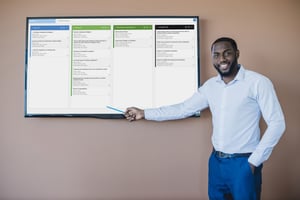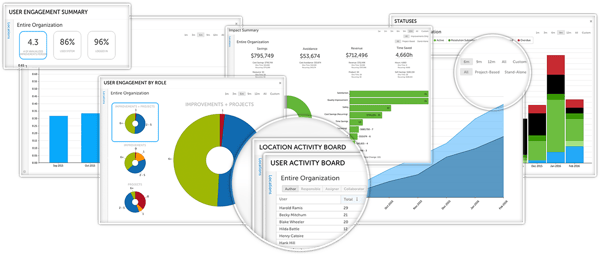 The Lean approach to business management is becoming increasingly popular with healthcare organizations. Leaders find Lean to be a perfect fit for healthcare because it helps maximize resources and reduce costs while keeping quality patient care the highest priority. To get the most out of the approach, many hospitals and healthcare networks use software that supports the Lean philosophy and related techniques. If you are considering that route, this post will help.
The Lean approach to business management is becoming increasingly popular with healthcare organizations. Leaders find Lean to be a perfect fit for healthcare because it helps maximize resources and reduce costs while keeping quality patient care the highest priority. To get the most out of the approach, many hospitals and healthcare networks use software that supports the Lean philosophy and related techniques. If you are considering that route, this post will help.Principal Features of Lean Software for Healthcare
There are many project management and collaboration software products in the market. Most allow for task scheduling and document sharing, but not all are designed to address the specific needs of Lean organizations. The following features set Lean software apart from generic solutions.
For help comparing Lean software options, download this free comparison matrix.
Improvement Capture
In healthcare, the Lean approach means that clinical and administrative staff are tasked with identifying and reporting opportunities for improvement. Lean software provides the platform for capturing each observation. Improvement collection is so fundamental that it must be easy for anyone to enter a new opportunity with all relevant details and documentation. Ideally, the solution will be online and available 24x7 from any location.
 Digital Huddle Boards
Digital Huddle Boards
Daily huddles are a favorite Lean technique used in healthcare. Traditionally, the team gathers around a whiteboard or poster that lays out current progress of improvement work. Lean software takes this idea to the next level by creating virtual huddle boards that show more than just the current state. You can drill down into each project and check the long-term impact of completed projects as well. If you like your standing meeting, you can use digital wall boards to make it interactive.
Active Workflow with Notifications and Alerts
In the same way healthcare providers receive alerts when a patient’s lab values or vital signs are out of range, Lean leaders and managers need to be warned when their attention is required. The best Lean software solutions provide workflow for every implemented opportunity. The right people receive alerts and notifications when tasks are due, or a deadline is missed. This helps ensure that no ball is dropped and that everyone is actively engaged in Lean.
Impact Analysis
Most healthcare organizations are data-driven and require quantifiable evidence that an improvement has been effective. Choosing software with impact analytics is the best way to get insight into whether your Lean initiatives are improving results related to specific strategic goals. A software platform is the best way to track the impact of improvements over the long term.

Activity, and Engagement Reporting
Building a Lean culture in healthcare takes time and effort. To be sure that Lean is spreading, leaders need to understand the engagement level of each department, team, and individual. Lean software provides a platform for activity and engagement reporting. Leaders and managers can spot trends in key indicators like the number of new opportunities submitted, the number of completed activities, and how often the system is accessed.
Success Broadcasting
The fastest way to spread Lean is to recognize and reward the people who are driving the push for positive change. The best Lean software solutions for healthcare have built-in improvement broadcasting to make it easy for managers to spread the word when good things start to happen.
Beyond Features
These features are all essential, but they aren’t the only important considerations for healthcare organizations. It is also important to look for a solutions provider that will be a good partner and help Lean succeed in your organization. Consider:
Implementation and Ongoing Support
We recommend sticking with vendors that will provide you with a dedicated account manager to ensure your success. You want to understand whether you will have help during configuration and deployment and what ongoing email and telephone support will look like.
Other Healthcare Customers
Healthcare is a unique sector and not every solution that works for other organizations is a good fit. That’s why it is important to talk to the vendor about their experience in healthcare and look for one that has clients similar to you.
Online Documentation and Video Learning
Of course, you will offer training to your team when you first implement the solution, but turnover in healthcare is frequent, so look for a solution with an intuitive knowledge center complete with video training so that you can bring new team members up to speed quickly.
Lean has the power to transform healthcare organizations by improving patient outcomes, reducing costs, and leveraging the collective wisdom of every employee. Lean software paves the path to these crucial goals. Compare software platforms using this free worksheet.
![[Watch Now] Top-Down Improvement Software Demo](https://no-cache.hubspot.com/cta/default/326641/2eef07b8-9131-49c5-9adc-bafb52e8796e.png)
![[WEBINAR] Bottom-Up Improvement Software Demo](https://no-cache.hubspot.com/cta/default/326641/8545f357-84e1-47b2-81e0-f4fa0d3cd893.png)


Add a Comment